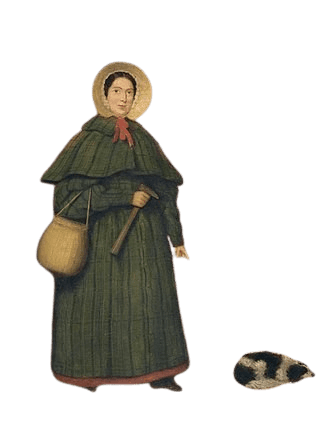Life and achievements
Early life
Mary Anning was born in 1799 into a family of low status in Lyme Regis, Dorset, a region geologically formed during the Jurassic period and full of fossils of marine creatures. Her father, Richard, was a cabinet maker and a part-time fossil collector; he got Mary and her brother Joseph into it. Although the Annings were poor and illiterate, the fossils they discovered became their source of income after Richard died in 1810.
Mary’s father and her brother used to take her with them for fossil hunting when she was a child, which helped her acquire a good sense of identifying fossils in the cliffs. Her first significant discovery was made at twelve: the skeleton of an ichthyosaur. This discovery at least gave the family some fame, but it did not solve their financial problems. Nevertheless, her work would still attract the attention of some of the leading geologists, thus heralding her lifelong commitment to paleontology.
Anning worked in the 19th century, when women were not allowed to join most scientific societies, and their work was not taken seriously. She learned the basics of anatomy and geology from scientific articles and studying animal and plant bones. Her hard work and dedication did not go in vain, and she kept discovering more fossils, which helped her develop the new science of paleontology.
Legacy
Mary Anning was a paleontology who worked during the early nineteenth century. Her story is one of hard work and discovery. Despite being a woman who did not receive much recognition during her lifetime, her work was vital in the early stages of paleontology. Her discoveries of ichthyosaurs, plesiosaurs, and other prehistoric creatures revolutionized scientific thinking about the Earth’s history and evolution. They proved the theory of species extinction and the existence of life in the prehistoric era.
Anning’s work played an essential role in the development of Darwin’s theory of evolution because the fossils she collected showed no longer existing species, which supported the theory of extinction. Although Anning was not given any official title during her lifetime, and this was partly because of her gender, she was respected by many of the leading scientists of her day, such as Henry De la Beche and William Buckland, who sought her advice on matters relating to fossils.
Anning is now recognized as one of the most influential figures in paleontology, and her life has been the subject of books, films and academic research. In Lyme Regis, the town she was born in, there is a museum in her name, and her achievements are remembered through celebrations such as the stained glass window at St. Michael’s Church. Anning’s story is still a source of inspiration for young scientists, especially for women, who can see in her an example of a strong and curious woman who overcame all the obstacles put in front of her.
Milestone moments
May 21, 1799
Birth of Mary Anning
Mary Anning was born in Lyme Regis, England, to a family of laborers.
Her father, a cabinet maker, took her out to look for fossils, and this activity led her to become one of the first women fossil collectors and paleontologists.
Feb 20, 1811
First Major Discovery: Ichthyosaur
Anning began her paleontological career at 12 when she found the first complete ichthyosaur skeleton.
This finding attracted much attention and started to build her recognition in the scientific community.
Jul 6, 1823
The First Plesiosaur Finding
Anning also found the first complete plesiosaur skeleton, another significant achievement.
At first, her discovery was met with much doubt, especially from scientists such as Georges Cuvier, but it was later validated, and she became a prominent palaeontologist.
Jul 25, 1830
Acknowledgement by Henry De la Beche
Geologist Henry De la Beche, a personal acquaintance, produced Duria Antiquior, the first effort at depicting prehistoric life from the vantage point of paleontology.
The painting was mainly based on Anning's discoveries and sold to help Anning's financial situation when she was in poor condition.
